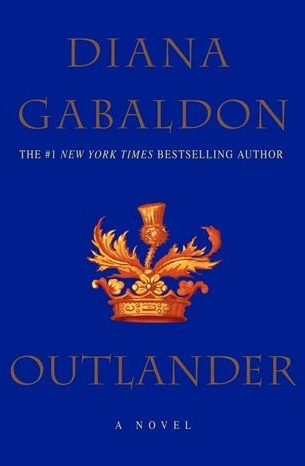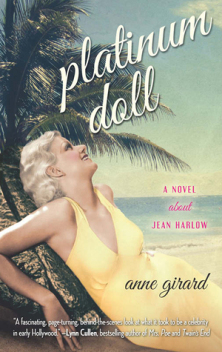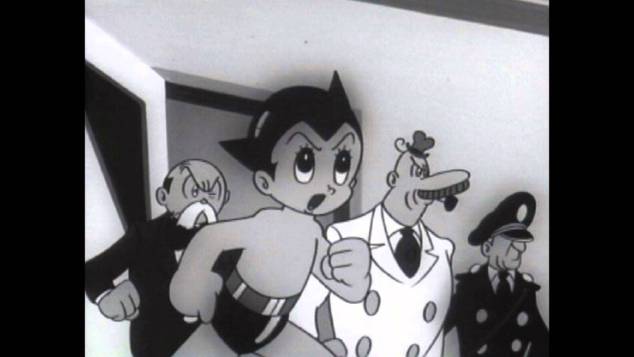Short story collections are a weird creature—plenty of writers write them, plenty of publishers buy them, but how many people actually read them? Enough, obviously, that they keep on being produced, but outside of MFA professors and particularly pretentious lit students, I don’t really know anyone who buys them. With a few exceptions—Alice Munro, George Saunders, Shirley Jackson—short stories are almost always seen as appetizers, the prelude to an eventual novel that will prove all these writer’s potential on display. Short stories are nice, but it’s novels we get excited about, novels we put in “top 10 lists” and make movies out of because novels are sexy, the strutting cool kids of the literary world. If you talk about buying a book and you’re a so-called “average American,” chances are you’re talking about buying a novel.
Which is a shame honestly, because short stories are, for a variety of reasons, kind of the shit.
On just a sheer pragmatic level, they’re super convenient. Want to try out a new author, but not sure you want to commit to a whole book? Pick up a short story or, better yet, a collection of them. An anthology is the literary equivalent of a Whitman’s Sampler—you get a little of everything so you can figure out what you like best and order a five pound bag of it off Amazon. Plus, perhaps it’s just me, but there’s just so much less pressure with a short story collection: it’s fine if you don’t finish it or skip around, whereas with a novel you always get the sense that you’re missing something if you do that. Novels are a long-term relationship; short stories are the frenetic, two-week summer camp fling. Both can be fun, but in (fun)damentally different ways. Good novels are craft beer, to be savored over a period of time; short stories are whiskey on the rocks, one fast, intense burst of flavor. Different folks, different strokes – or, if you’re me, all the strokes, just at different times.
Anyway. That’s the pontificating over with; you’re not here for this shit anyways. Here’s your listicle, the official peer-reviewed, scientifically-tested, USDA-certified list of short story collections you should read*, with long, ramblings annotations below:
*This list is, by necessity, partial and woefully incomplete; obviously, I haven’t read every short story collection in existence and there are some authors whom I’ve woefully omitted either because I’ve only read one or two works by them. Super-canonical authors—Raymond Carver, Jorge Luis Borges, Vladimir Nabokov, etc—were also deliberately left out, on the premise that others have already written more and with much more eloquence on them. With that said: Karen Joy Fowler’s “The Pelican Bar,” Alice Munro’s “Child Play,” Madame Flannery O’Connor’s “A Good Man is Hard to Find,” and Junot Diaz’s “How to Date a Black Girl, Brown Girl, or Halfie.” It’s good stuff. Get off WordPress and read them.
1.
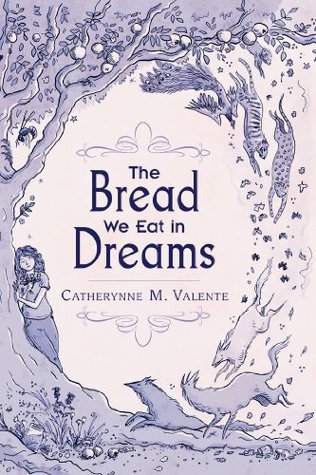
This is probably an unpopular opinion, but I’ve thought that Valente is a better short story writer than she is a novelist. Which is not too say that I dislike her writing because I love her it—Cat Valente was trained as a poet and it shows, just in the very way she constructs her sentences . See Exhibit #1, taken from “White Lines on a Green Field”:
“They stood around me like three fates and Mr. Whitmore put little spangly tiaras on their heads and they looked at me like I had caught a pass in the end-zone, Hail Mary and three seconds left on the clock. I stared back and their tiaras were suddenly rings of wheat and appleblossoms and big, heavy oranges like suns, and I could see in their eyes mine wasn’t rhinestones any more than it was ice cream.”
That’s prosodic orgasm, right there.
The thing about Valente, though, is that she writes mythpunk – which, if you don’t know what mythpunk is (I’m guessing most normal people), is a genre that takes the punk attitude of suspicion towards institutions and applies it to myths – and the thing about mythpunk for me is that it (or at least the way Valente writes it) works way better short doses. Part of the appeal of myths and fairytales is their setness: the hero will always kill the dragon, the princess will always marry the prince, the third daughter is always the smartest]. Etc. It’s a trapped, Greek tragedy kind of appeal, but it also means that the characters—tied to their fate and their place in the story—have less agency. They can be archetypal, and archetypes don’t always translate into full-fledged, literary realist characters. In four or even forty pages, this is less noticeable; in four hundred, it begins to dampen the novel’s other strengths. Which is a shame because Valente, when she is good, is just so, so good—not for everyone of course, but that’s why short story collections are so great, right? According to Amazon, The Bread We Eat in Dreams seems to be out of print at the moment; if so, The Melancholy of Mechagirl collects a few of the same stories and is a more than suitable replacement.
2.

I think I first came across Charles via SorryTelevision’s review of How to Safely Live in a Science Fictional Universe, which I was intrigued, first by the title and the postmodern playfulness it promised, and secondly by the fact that the author was Asian-American (because, let’s be real, I’m always on the lookout for minority authors in genre fiction). It was Third-Class Superhero, however, which I read first and which—after reading Sci-fi Universe—I ultimately enjoyed more. Like Valente, Yu is one of those writers whose style seems more suited to short fiction than novels, albeit for different reasons. What Yu does best is take a single, intriguing idea—what happens to superheroes who don’t quite make the cut? What would RPG characters think if they were sentient yet still under the control of sleep-deprived fifteen-year-olds?— and spins it out for all its human pathos; this man is cut from the same cloth that made Disney give a fucking toaster feelings. This is something Yu does really, really well. It’s also a skill more suited to short story form than novel form. Tonally, Sci-fi Universe invokes the same low-key melancholy as Yu’s other stories, but it turns out that that melancholy isn’t quite enough to drive 256 pages. Yu’s not for everyone, but if you like your fiction a little melancholy and a little meta, then he’s a guy you should check out; Personal faves include “Third-Class Superhero” and “Autobiographical Raw Material Unsuitable for the Mining of Fiction.”
3.

I bought Trigger Warning for my brother for Christmas, one of those gifts for others that are secretly a gift for yourself, and while I indeed read and enjoyed TW (and Smoke and Mirrors and American Gods and Sandman and…) I feel like Fragile Things is better for a Neil Gaiman novice, both for the variety of forms contained within (novella, poetry, short story) it and the fact that the standout stories are just especially standout. “Sunbird!” “How to Talk to Girls at Parties!” “The Problem of Susan,” aka the creepy bestiality Narnia fanfic that scarred me as a child! If you’ve never read Neil Gaiman, read it! Gaiman’s a great writer, evocative but economical with words – “black as night, sweet as sin” is still one of my favorite descriptions of coffee – and he does a wonderful job of combining the mundane everyday and the fantastic. In fairy tales and movies, all those archetypal hero’s journey tales, there’s always this trope where an ordinary, clueless person is thrust into and Neil definitely milks a lot out of that conflict between “everyday dude” and “otherworldly being of unfathomable power who has existed for unimaginable eons.” Tl;dr, if you don’t love yourself. If you have read GNeil, read it anyway. He’s a cool dude.
4.

Aaand just about the point you think this list is going to be nothing but genre fic, here comes Stuart Dybek, aka proof that yes, I am indeed a real lit major who studied real books in college. Which is not to say that I like Dybek any less—”Pet Milk” was the first short story I read for a college creative writing class, and it still strikes me as just an extraordinarily beautiful piece of short fiction. I mean, the transitions between present and past, here and now and there and then, are just so fluid, you almost don’t notice the shifts. And the language! Maybe it’s a super writerly thing to fixate on, but the way Dybek writes and moves between scenes is just really, really enviable. Dybek’s not super-famous, but he’s very definitely a writer’s writer, the type of guy you read if you’ve got an interest in the craft and in improving your own mastery of it. If anything, read Dybek so you can understand my jealousy of Sanders.
5.
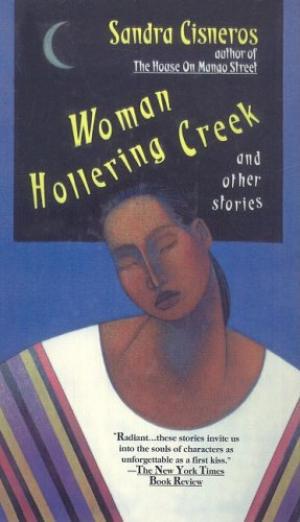
For some reason, A House on Mango Street was one of the books I never read in high school. Based on the strength of Woman Hollering Creek + recommendations from Junot Diaz, I really should. Cisneros is a Chicana writer, and that particular identity is a main theme in this collection—what it’s like to be Chicanx and what it’s like to be a woman in a world where those traits are not always valued. Stylistically, these stories range from cut-and-dry realism to flirting with magical realism, and they’re written g-o-r-g-e-o-u-s-l-y—Cisneros is another of those writers I’m endlessly jealous of, because her prose is just so effortlessly beautiful. The effortless part is an illusion, I’m well-aware, but oh, to believe that it could be! That you could be Sandra Cisneros and produce. unprompted and unaided, lines like this:
“If I am a witch, then so be it, I said. And I took to eating black things – huitlacoche the corn mushroom, coffee, dark chiles, the bruised part of fruit, the darkest, blackest things to make me hard and strong.”
I mean wow, right? Wow.
Faves here include Never Marry A Mexican, Woman Hollering Creek, and Eyes of Zapata. The line quoted above is from Eyes of Zapata, and while I don’t think there’s actual (?) witchcraft involved in the story, it serves as a good summation of many of the story’s concerns.
6.

Tenth of December, George Saunders: One of my friends once said, during a creative writing class, that after a while, Saunder’s stories tend to get a bit…well, George Saunders-y. And that’s a legit criticism and one that’s probably true of multiple authors on this list (with the obvious substitution of their names for Saunders), but the thing is, I like George Saunders-y. Describing what makes a story a George Saunders story is difficult, but I think it comes down to two things. One is that Saunders seems to be part of the wave of contemporary post-postmodern (post-post-postmodern?) authors embracing an increased presence of genre fiction in their work—think Michael Chabon and comics, Junot Diaz and fantasy fiction, Karen Russell and whatever-the-fuck Swamplandia! was. That’s kind of the vibe Saunders gives off, slipstream with a slightly heavier emphasis on the “lit” side of the lit/genre equation.
The second part is—and this is totally biased—a Saunders story is nice. I don’t nice as in Mary Poppins, PG song sequences and all is dandy and good with the world, but nice in the sense that they’re hopeful; you get the sense, through his work, that Saunders is the type of guy who fundamentally believes in the potential of human empathy, and in a literary landscape where humans are frequently nothing but bastards, that’s a refreshing point of view. There’s a lot of heart in Saunders’s stories, is what I’m trying to say; his work is playful, but unafraid to be sincere. (Of course, all of this is informed by my personal view of the man, which—from all the interviews/account by other authors/GQ profiles I’ve read—is one of this really nice guy, the sweet, wise old grandfather type you wave to at the bus and whom you secretly want to raise you so you can learn all the secrets of being wise and grandfatherly and one of America’s most celebrated writers. Basically, George Saunders is the elderly golden retriever of contemporary American literature.)
7.

There’s a song on the internet which I’ve only discovered recently called “Fuck Me Ray Bradbury,” and honestly, if the lines “fuck me Ray Bradbury/the greatest sci-fi writer in history” don’t sum me up a little, I don’t know what does. I’m pretty low-key about my Bradbury love—unlike, say, Gaiman or Chabon or even Temeraire aka Napoleonic Dragons and Subtext, he’s not someone I consistently bore my friends with—and I do not actually think he is the greatest sci-fi writer in history, but that doesn’t change the fact that he is one of my literary loves, low-key but always there. Martian Chronicles occupies a similar niche.
Chances are, if you’ve heard of Ray Bradbury before, then it was in the context of Fahrenheit 451, part of the holy quartet of required high school reading about censorship (1984, Brave New World, and The Handmaiden’s Tale are the others). And while I did indeed read and enjoy F451 in high school—albeit not for class, which may have contributed to the enjoyment—I’ve always liked Martian Chronicles more better than, which is the kind of thinking that probably drives English teachers to drink. Sure, F451 is a heavy, weighty novel, pondering the whole themes of totalitarianism and anti-intellectualism that are so popular as English class topics everywhere. But that’s one theme—not implying that there’s only one theme in F451 (there are many!), but it’s the main one, the point that gets bang bang bang hammered down.
In Martian Chronicles, Bradbury doesn’t have to do that. He can take on multiple themes, tying them together with threads less loose than the ones required for a novel. Under the theme of “we’re all the same despite xenophobia,” we get accidental encounters in time travel, post-apocalyptic houses, and picnics on foreign planets. Untied to a central narrative, Bradbury gets to wander, pressing his literary whim to whatever flowers happen to be nearby. And that he is: the prose, as per most Bradbury stuff, is stunning. A lot of Bradbury stories—Dandelion Wine, Something Wicked This Way Comes—deals with the theme of youth, and he has a way of bringing across in his prose a child’s guileless, bright-eyed wonder at the world. Just take this small passage from “Night Meeting”:
“They pointed at each other, with starlight burning in their limbs like daggers and icicles and fireflies, and then fell to judging their limbs again, each finding himself intact, hot, excited, stunned, awed, and the other, ah yes, that other over there, unreal, a ghostly prism flashing the accumulated light of distant worlds.”
I might have first learned of Bradbury from F15, but it was in Martian Chronicles where I first fell in love.
8.

The thing about Angela Carter is that—like Valente—she’s an author I enjoy in smaller doses. Granted, at present I’ve only read one novel and one short story collection of hers and The Infernal Desire Machines of Doctor Hoffman had some pretty weird sex going on, but of the two, Bloody Chamber still comes out ahead, partially for less weird sex reasons but also for plot reasons. Like Charles Yu, Carter’s plots (from the two (2) samples of her work I’ve read) do better when they’re 30 pages, not 300. Or 3 pages, even—there are some really lovely vignettes within this collection, pieces that take fairy tale tropes and deliver them with twists; “The Tiger’s Bride” was a fantastic retelling of Bluebeard with a badass mother and not brothers coming in to save the day, and I loved the addition of Asia to the mother’s backstory (as with Yu, representation scores brownie points with me).
When describing Carter’s writing, it’s easy to compare her to Catherynne Valente and even easier to describe her as mythpunk, though she was working years before either that term or its cousin The New Weird came about. It’s an easy comparison to make, and so for simplicity’s sake, I’ll make it. Like Valente, Carter does heavily feminist, heavily postmodern reinterpretations of fairy tales, often exploring (like any good lit student) along the way the implications of these original tales. What ultimately separates though, is the prose. While Valente’s writing is highly ornate, baroque or art noveau in its sense of spirals and ornamentation, Carter’s writer is a little sparser and a little more weird. Still lovely, of course, but in a more surreal, slightly odd way; I think the easiest way to describe it is that while Cat’s writing is like a butterfly, Carter’s is a moth. I sometimes feel with Valente that she shows her cards a bit too much—is a bit too overt with her beauty and her themes (important themes, by the way, so the overtness is welcome)—whereas with Carter, there’s more a sense of mystery. She leaves more things shaded, unsaid, and that, too, has its own allure.
9.

I really wanted to put Where are You Going, Where Have You Been? on this list, but the embarrassing fact is that— other than the eponymous story, which I loved—I actually haven’t read that book. It’s supposedly really good, so I should probably check it out sometime, but until such time as that happens, I’m going to recommend Wild Nights! because a)JCO is fire and b)Wild Nights! is fire. Content-wise, WN is perhaps peak literary referentiality—the title itself is a taken from an Emily Dickinson poem and all the stories within are JCO’s attempts to imagine the last days of famous authors: Twain, Hemingway, Poe, James, and (of course) Dickinson herself.
If you know these stories already, then the joy of these stories is probably kind of obvious, akin to the joy of seeing Hamlet on screen or adapted into a sci-fi western opera; it’s fanfiction and literary gossip melded and rarefied by the JCO name to “real literature,” and if you don’t find that delightful, well, this blog is possible not for you. Even if you don’t know anything or care about dead writer drama, these stories still have plenty going for them. A solitary android Emily Dickinson whose solitariness invariably disappoints owners who want a pet poet? An aging Mark Twain whose fear of mortality leads him to an unhealthy obsession with children that leads others to tragically misinterpret his motives as sort-of pedophilia? Even without the “wow” factor of famous names, these are scenarios that already have drama built into them.
What’s more than that though, is just the huge amount of sympathy JCO builds for her writer-characters. Ernest Hemingway, while a brilliant writer, was also occasionally a misogynist dick, and Oates doesn’t shy away from showing that. But even in the midst of that, JCO conjures sympathy for him, making Hemingway not just an asshole but a tragic asshole: a sad, old man, clinging to alcohol and resenting his wife for preventing him from committing suicide. I’m not a JCO expert; there’s a lot of her I haven’t read but there’s a lot she’s written, so it’s possible that, in the long run, WN isn’t that well-known or loved. If that’s true, then that makes it an even more convincing argument for reading more of her.
10.

Brief (ha) confession time— I wrote my senior thesis on Infinite Jest, so it’s honestly pretty hard for me to be objective with DFW. It also means I know more than any normal person needs to about DFW’s work, so it is in my capacity as an overeducated liberal to say that in general, between the essays and the gargantuan books, DFW’s short fiction gets the short stick. Which is kind of a shame, because I think there’s a lot of interesting stuff going on in some of these stories, but that’s a thought for another, more pretentious post—right now, what matters is that the short stories are, quite frankly, lit af.
For those of who like your DFW metafictional and experimental, the short stories are that aspect of DFW’s novels but in condensed form. For those of you who liked “Consider the Lobster” but are apprehensive of starting Infinite Jest (which, let’s be real, is a category that probably forms the majority of Wallace readers—not a judgment, just a statement of fact, since IJ is fucking huge), the short fiction’s a good place to see if you would be a Wallace fiction person as well. Good places to start are “Forever Overheard” and “The Depressed Person.” The former is the more traditional piece, despite being told in the unconventional second-person, with most postmodern sleight-of-hand toned down so that you; the second’s got more traditional DFW hallmarks like footnotes, but what it’s really got going for it more is the DFW visceral description of depression (oh man oh man see also “The Planet Trillaphon As It Stands in Relation to the Bad Thing”! Twenty-three years old and already producing works of fucking genius, my God). Outside of these, “Octet” is a personal favorite, but it’s definitely heavy on the pomo metafictional mind games—but to an interesting and actually pathos-inducing purpose!—so if you’re allergic to those, ease into it.
Advertisements Share this:
